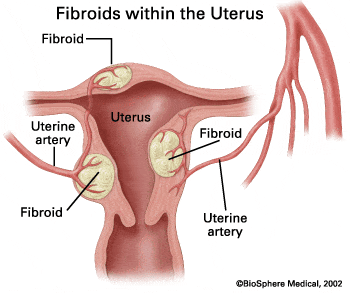Fertility Facts: Hysteroscopy helps your physician determine causes of uterine bleeding and assess the shape of the uterine cavity. If bleeding results from a mass or abnormality in the shape – most commonly fibroids and polyps – this procedure can be used to both diagnose and treat the problem.
What is a hysteroscopy?
Hysteroscopy is a surgical procedure that allows your physician to look inside your uterus to investigate the source of abnormal uterine bleeding, or a cause of infertility or miscarriages. The procedure is done using a hysteroscope, which is a narrow fiberoptic camera that is inserted into the uterine cavity.
Typically scheduled in the week after your period has stopped, a hysteroscopy generally has a short recovery times and minimal post-procedure discomfort compared to other, more invasive procedures.
The length of the procedure is dependent on what is identified during the procedure. Just looking to see if any abnormalities are present can be done in 10 minutes. Removing a large fibroid can take over an hour.
An abnormality is found during the hysteroscopy. What next?
If an abnormal condition is found during hysteroscopy, such as fibroids or polyps, it may be corrected in the same procedure. Typically, studies (such as ultrasounds) are done leading up to the hysteroscopy, leading to suspicion of a particular cause. Visual confirmation during the procedure can be followed by immediate treatment. Abnormalities that can be identified during hysteroscopy include:
- Fibroids and polyps — In certain circumstances, these non-cancerous growths in the uterine cavity can be removed during hysteroscopy.
- Adhesions —Uterine adhesions (also known as Asherman’s Syndrome) are bands of scar tissue that form in the uterus and can interfere with an embryo’s implantation. Adhesions can be removed during hysteroscopy.
- Septum— A uterine septum is an anatomic abnormality, where dense fibrous tissue divides the uterine cavity. Hysteroscopy can help determine whether you have a uterine septum and in some cases the septum may be removed during this procedure.
- Abnormal bleeding— Endometrial ablation may be performed when there is heavy or lengthy menstrual flow or bleeding between periods. Endometrial ablation destroys the uterine lining in order to treat the bleeding, and this treatment is only used in women who are certain they have completed family building.
What can you expect after a hysteroscopy?
Cramping and slight vaginal bleeding is common for one to two days after the hysteroscopy. Some patients also experience shoulder pain and may feel faint or sick as a result of anesthesia. Generally, people should be back on their feet the next day, ready to return to work or school. However, if you experience fever, severe abdominal pain, or heavy vaginal bleeding or discharge, please contact your medical team.
If you are experiencing abnormal uterine bleeding or suspect fibroids, please schedule an appointment with one of our physicians or speak with one of our New Patient Liaisons by calling 877-971-7755.


